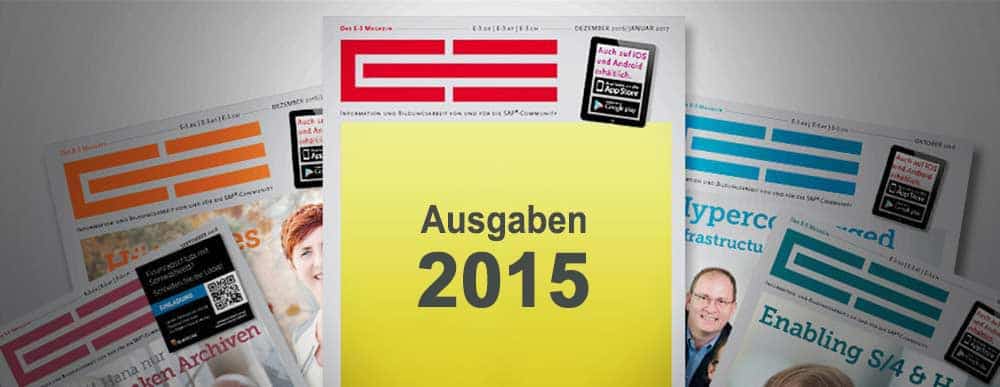IT quality assurance before rollout


Companies in all industries depend on the optimum service quality of business-critical applications to ensure that their business processes run smoothly. Every day, IT managers are responsible for ensuring that application services are available to users worldwide in a stable and high-performance manner.
End-to-end monitoring of application operation, i.e. monitoring service quality from the user's perspective, is the tool of choice for many companies to identify faults in service operations and rectify errors quickly. Correcting errors in IT service operations is good.
But there is an even better way: avoiding errors before IT services go live. Companies that methodically pursue the principle of error prevention in IT quality assurance secure an economic advantage through a significant reduction in IT costs.
Rule of 10 for error costs
The rule of 10 for error costs is known from the industrial production of goods: The economic cost of correcting errors increases tenfold in each phase of the production process.
In the initial phase of production analysis and planning, errors cost the least. In the next stage of material procurement and product manufacturing, error costs increase exponentially, and if errors are only discovered after the product has been delivered and is being used by the customer, the costs for eliminating errors explode and the economic damage is enormous.
In the life cycle of an IT service, the conception and planning (service design) and development and testing (service transition) phases precede service operations.
For the implementation of preventive IT quality assurance, this means that monitoring service operations is not enough. IT quality assurance must begin before the applications are rolled out to service operations.
The challenge of change
In companies with dynamic business processes, IT systems must continuously adapt to changing requirements. But even if patches or updates for applications are regularly installed or new applications are added to systems, IT operations must continue to run smoothly.
One challenge of increasing importance for IT management is to minimize the risk of errors in the change process to almost zero. Companies must therefore establish an automated quality check as part of the change process. However, four out of five applications are only tested manually or not at all before they go live.
Tests are often outsourced to third parties, but they can only carry out a purely technical check, as outsiders do not have a deep insight into the user's requirements.
On the other hand, when a check is carried out in the specialist department, the employees there lack an eye for the technology behind the application - quite apart from the fact that software testing is not one of their core tasks. Due to the high complexity and dynamics of IT systems, errors are virtually pre-programmed - as are the associated costs.
Quality in the service lifecycle
ServiceTrace, for example, provides software that enables IT managers to easily implement the principle of preventive and sustainable quality assurance for business-critical applications across the entire service lifecycle.
The "virtual user" ServiceTrace is based on a synthetic user simulation and automatically tests applications for the required functionality, scalability and performance at regional and globally distributed locations before they are rolled out into live operation.
Once the applications have gone live, ServiceTracer monitors the service quality (defined in service levels if applicable) for users around the clock by measuring the availability and response times of business-critical transactions, such as logging into the SAP system, from the user's perspective.
The software can be used universally and tests all applications, regardless of whether they are SAP, Office programs, web-based applications, services in Citrix terminal environments or on-premise solutions.
The user simulation provides valid measurement data even if exceptions to the measurement routine occur, such as pop-ups when updates and patches are installed or failures of a monitored application.
The measurements run as hidden Windows sessions, secure against unauthorized access. Sensitive data - in e-commerce, healthcare, banking and insurance - remains protected. The ServiceTracer quality tests are set up simply and intuitively as a graphical workflow and can be adapted quickly with just a few clicks if changes are made to the applications.
This means that even users without programming knowledge can align ServiceTracer workflows with business processes.
DevOps and IT business alignment
ServiceTracer supports collaboration between development and operations (DevOps): The automated quality tests prior to rollout guarantee faster and more secure delivery of new or modified services to operations (continuous delivery).
Centralized, web-based management of test scenarios enables the reuse and adaptation of workflows for the development, testing and operations departments and improves communication between the service delivery units involved.
The quick and easy setup and adaptation of measurement sequences allows applications to be adapted to dynamic business processes in companies in a quality-tested manner.
Automated regression tests
A practical application example for preventive IT quality assurance is regression tests that ensure the import of new transports into an SAP system and thus a critical change process.
An SAP transport affects the functionality of the entire production system. If errors creep in here, for example in the business-critical product and price calculation segment, the affected company suffers real and tangible economic losses.
Often, the faulty transport can only be corrected by completely restoring the SAP system to its status before the change, which in turn means an unplanned longer downtime of the entire system and thus a complete breakdown of business processes in the affected company.
This risk is commonplace in companies that manage their business and production processes with SAP: hundreds of transports are imported into the system every year. The effort required for quality assurance in change management is therefore correspondingly high.
Automated regression tests with ServiceTracer save important resources such as time, personnel and hardware at this point and reduce the risk of errors in manual test procedures. In a test environment that maps the SAP production system, the solution automatically tests the planned integration of the transports into the overall system.
If the ServiceTracer workflows run without errors, the change is carried out, i.e. the tested transport is automatically imported into the production system. If the ServiceTracer identifies errors in the test system, they are reported and documented immediately.
The change is not carried out and the IT manager can use the detailed error information that ServiceTracer reports to correct the transport to be imported.
Despite frequent changes - which are usually made over the weekend - IT managers can be sure that SAP will be available to all employees company-wide on Monday morning.




